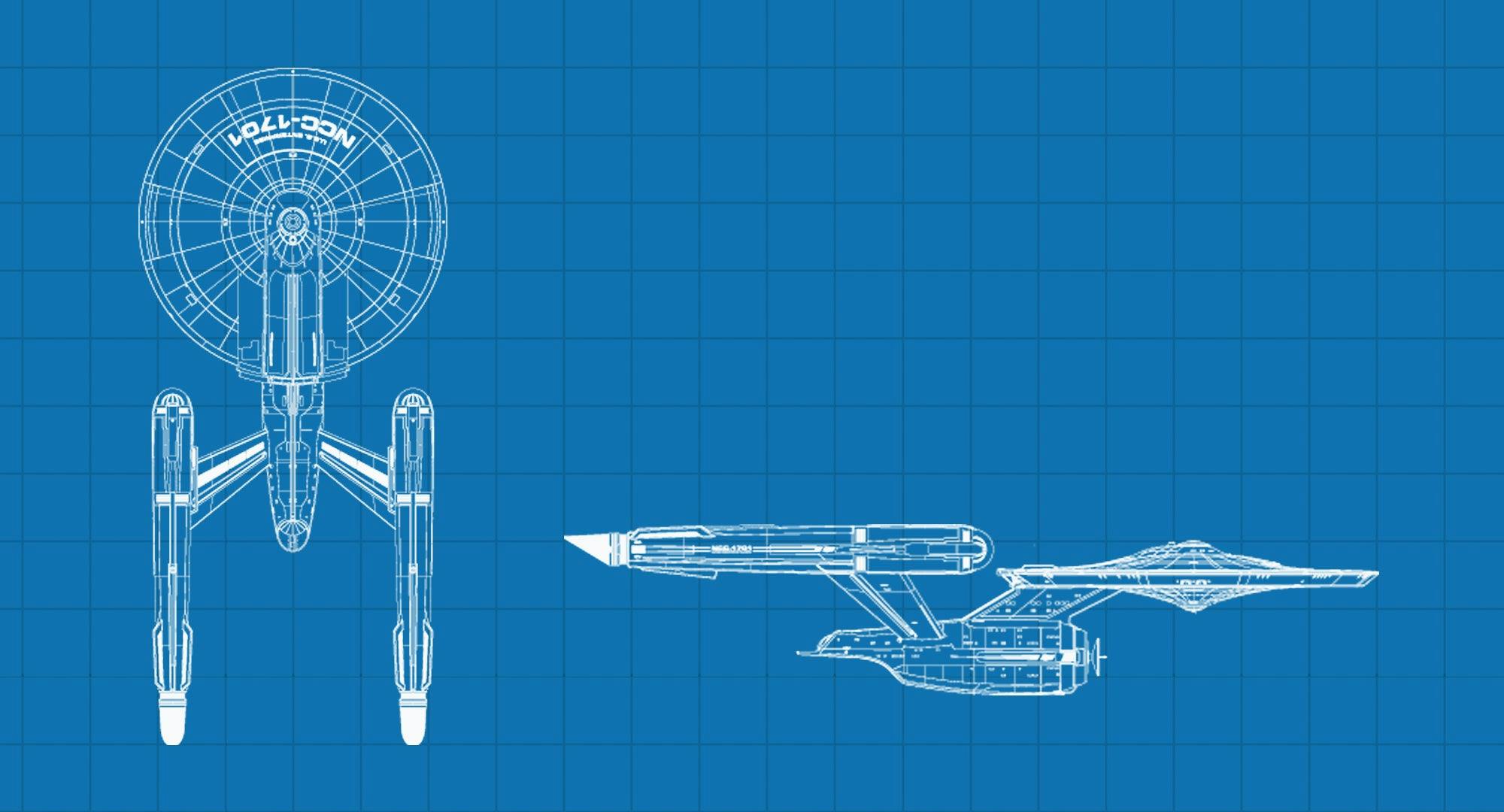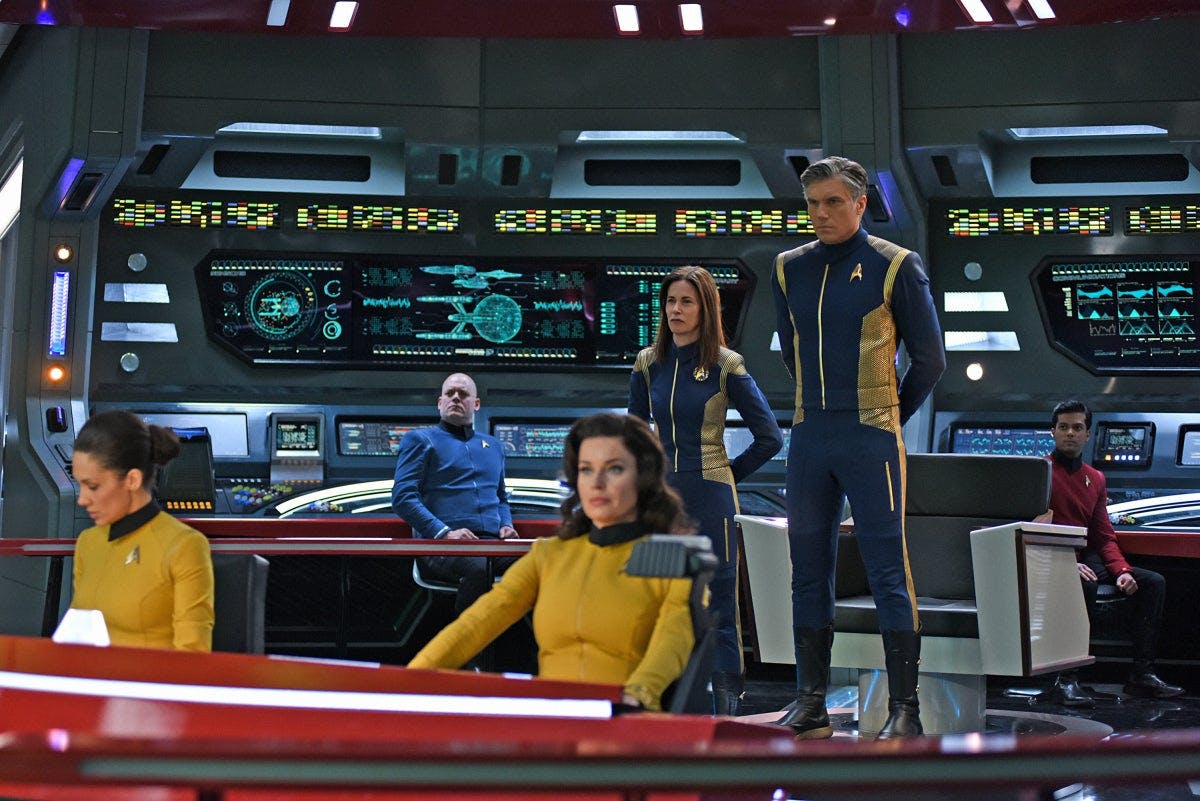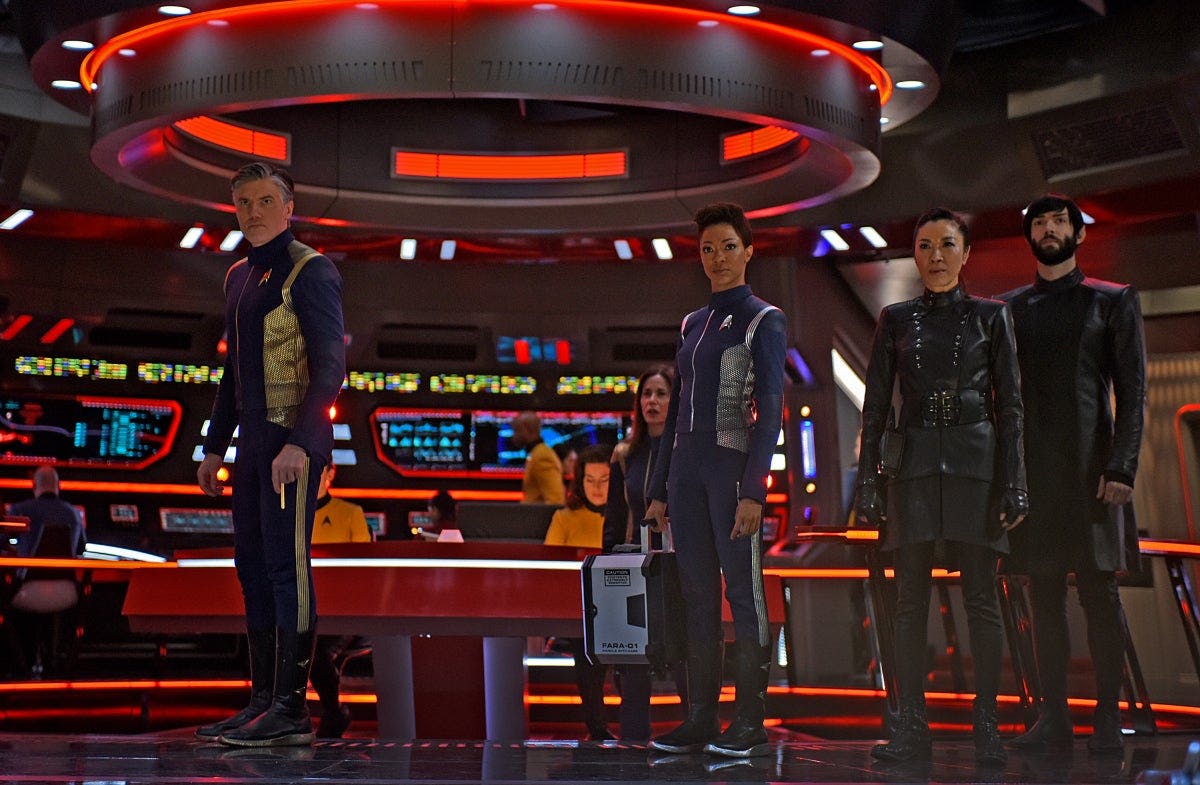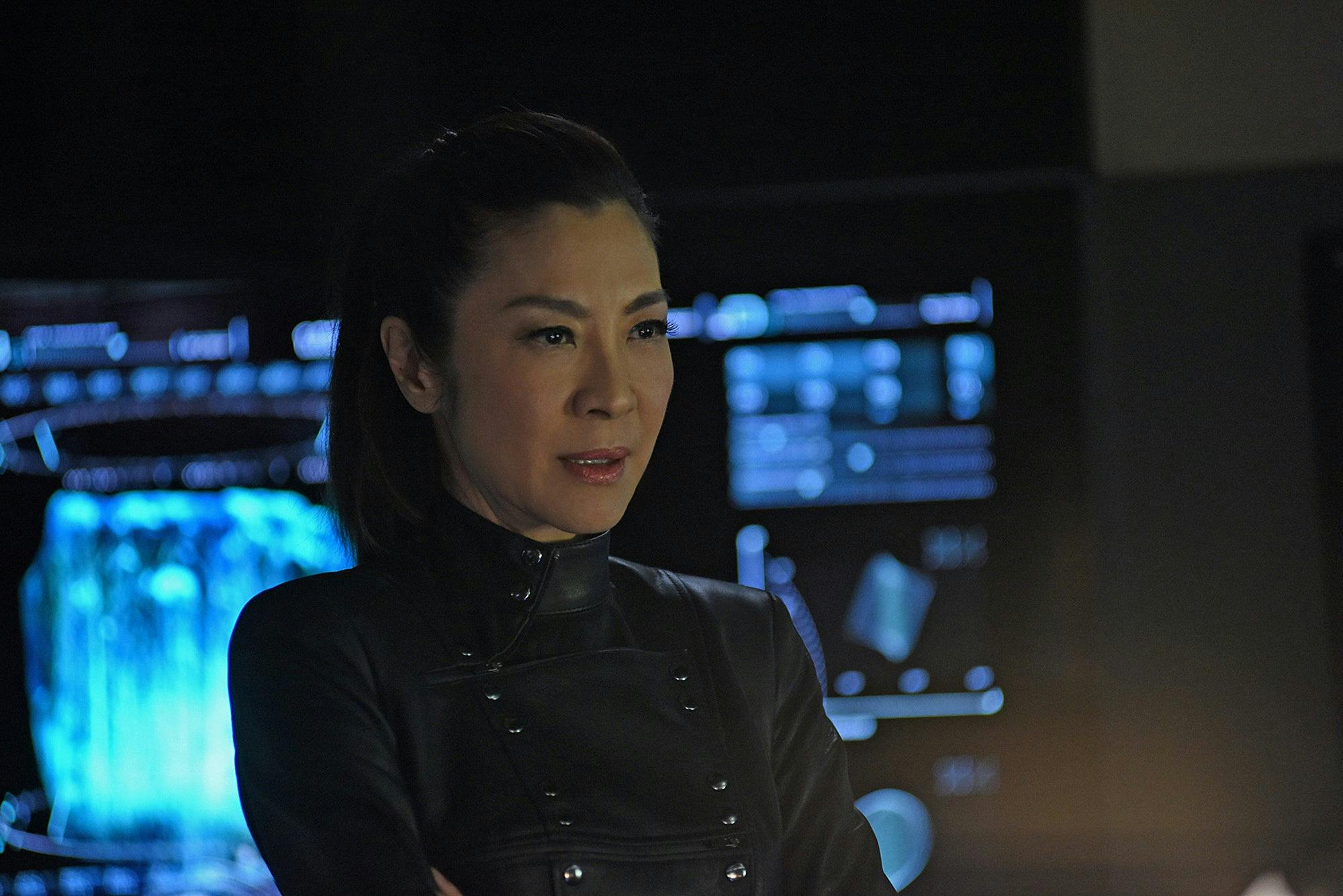Published Apr 12, 2019
How Do You Improve on Perfection?
'Discovery''s production designer, Tamara Deverell, reveals how she brought the U.S.S. Enterprise into 2019.

StarTrek.com
There are jobs and then there are jobs. Tamara Deverell has worked on all sorts of memorable movies and television shows over the course of her more than two decades as an art director and production designer. From USA's Suits to films like X-Men, Deverell has proven time and time again that she has the range, but still, Discovery marked a new career challenge. Week after week, the Discovery production designer works on episodes that require the effort of a full feature film.
But it's worth it; after all, how many people can claim they recreated the U.S.S. Enterprise? Deverell did precisely that for Discovery, and fans — after a quick glimpse at the iconic ship’s exterior in the season-one finale — got their first look inside the infamous ship during “Such Sweet Sorrow, Part 1.”
StarTrek.com caught up with Deverell, who discussed bringing the Enterprise back to life, revealed a few Easter eggs, and indulged us in a game of Six Degrees of Star Trek.

StarTrek.com
StarTrek.com: A lot of people don't know what a production designer actually handles on a show or movie. Take us through your responsibilities on Discovery.
Tamara Deverell: The production designer is responsible for the entire look of the show in conjunction with the cinematographer and directors. Everything you see on the screen is something the production designer had a hand in, working with costumes and props and anything visual. We're like the visual architects of the film and television world.
How big a challenge and how big a playground is something like Discovery?
TD: A huge playground. Super-fun playground. It's a big show, especially for television, and certainly the biggest one I've ever worked on for television. As you can imagine, everything that can be built is built. [Anything] not built [is rendered through] visual effects. I'm responsible for the major part of the design process. All the initial concepts for even the exterior of the ships, and the planets start with me and my concept illustrators in the art department.

StarTrek.com
We first saw the exterior of the Enterprise at the end of season one, and now we’ve gone inside the iconic ship. So, you’ve been dealing with the design for a while now, right?
TD: The exterior of the Enterprise design had actually started before I got there. I started a little bit later in season one and I sort of carried the torch for the Enterprise exterior. There was always a strong desire to build the interior. I actually started designing the interior of the Enterprise in season one. There was some thinking that the writers wanted to [use those interiors] earlier, but then we revealed the Enterprise at the end of season one. Starting the design work way back then … was a good thing because when we came to the end of season two, they actually had concept illustrations and most of the bridge of the ship worked out.
The Enterprise crafted for The Original Series was fantastic, futuristic and, production-wise, a thing of its time. How did you go about recreating something people know and love while still giving it a look that’s both true to Star Trek: Discovery and is a thing of our current time?
TD: I really started with TOS, which is what I grew up with, and looked at that ship and how we could do all kinds of nods to it without making it look like it's made out of cardboard. As much as we all love TOS, the audiences of today want more. We started with the same size as the original Enterprise and, of course, we enlarged it by adding a back hallway. Some of the parameters of the original size... the step down, the placement of the captain's chair, where the consoles were, where Uhura was, where Spock was, all the main characters, we kept that general layout, much more so than some of the other Enterprises we've seen.
Then, I really wanted to color-code. So, I was playing a lot with the colors of the Enterprise. There are actually variations [of the red-orange] in the Enterprises . That's very distinct, and I went through the archives at CBS to look at those colors and try and match them, but in a new way. We were bringing in the Discovery feel, but also using materials and methods of building it that were new to us, like metal powder coating — metal pieces that are powder-coated create a really rich color and strong basis to build the set. We experimented with it on the Enterprise, and I think we’re going to use it more in Star Trek. It looks more like a ship than just using wood and plaster.
Pretty much every kid who loves Star Trek owned or owns the Enterprise blueprints and/or the Haynes Owners’ Workshop Manual. How much did you use those as resources?
TD: That was our starting point, for sure.
How often did it strike you that you were designing the Enterprise?
TD: I go to my job, and I do my job. I work really hard. I work long hours. But [there was a] quiet little-girl thrill when I would go to sleep at night; "Oh my God, I'm designing the Enterprise. I'm gonna pee my pants!” It brought out the kid in me; let me put it that way.
Since the first half of the season finale has aired, please tell us about any Easter eggs hardcore fans should be freeze-framing.
TD: [In TOS]they had a light in the turbolift that goes up and down. We put a monitor there, but we did a very similar graphic on it. There are so many, we tried to put those things in. We actually got some reproductions of the original buttons on the console, the same exact size and color, and we used those as the basis of our buttons.

John Medland/CBS ©2018 CBS Interactive, Inc.
We couldn’t help but laugh out loud when Georgiou walked in and complained, “Orange? Really? Ick!" Was that scripted, or ad-libbed by Michelle Yeoh? And, either way, what was your reaction?
TD: That was scripted. The Enterprise had different colors. They changed it over time. The way it was lit, sometimes it looked really orange and sometimes it looked very red. The orange we’d picked, which was the original orange, was really red.
[So] I actually went to the writers and said, "I'm uncomfortable with this line." I did this whole layout of the different oranges and the red we decided we were using, and all of that. We had powder-coated this metal in this red, so there was no going back. I went on and on and on. Alex Kurtzman wrote back, saying, "This is why we love you, Tamara. It's okay. We're gonna say orange. It's okay, don't worry." It was just a funny story. I loved Michelle’s line, but to me, like any production designer would think, it was all about, “Do I have the right color?”
For our last question, let’s play Six Degrees of Star Trek. Your husband, Ken Woroner was the unit photographer on The Lion in Winter, with Patrick Stewart. You crossed paths with Anton Yelchin on Charlie Bartlett. You worked with Doug Jones on The Strain. You produced the film Still Mine, which starred James Cromwell and Genevieve Bujold, who has her own unique history with Trek. Are there others like that, that we didn’t catch? And how cool are those connections?
TD: That is pretty amazing. I have to tell my husband. I worked on X-Men with Patrick Stewart and Rebecca Romijn. I was the art director on the first X-Men, which was shot here in Toronto. Oh man, I didn't even think about the Jamey Cromwell and Genevieve connections. You were digging deep!
This interview has been edited and condensed.
Star Trek: Discovery Seasons 1-4 are currently streaming exclusively on Paramount+ in the U.S., the U.K., Switzerland, South Korea, Latin America, Germany, France, Italy, Australia, and Austria. Seasons 2 and 3 are also available on the Pluto TV Star Trek channel in Switzerland, Germany, and Austria. In Canada, it airs on Bell Media's CTV Sci-Fi Channel and streams on Crave. Star Trek: Discovery is distributed by Paramount Global Content Distribution.
Stay tuned to StarTrek.com for more details! And be sure to follow @StarTrek on Facebook, Twitter, and Instagram.

